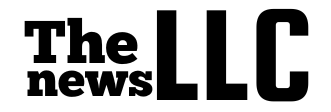Tarot cards have been used for centuries as a tool for divination, self-reflection, and spiritual growth. Each card in a tarot deck carries symbolic imagery that can provide guidance on various aspects of life, from love and career to personal development. Whether you’re a beginner or an experienced reader, understanding the simple meanings of tarot cards can help you connect with their messages more intuitively.
What Are Tarot Cards?
A tarot deck consists of 78 cards, each with its own unique meaning and symbolism. The origins of tarot cards date back to the 15th century in Europe, where they were initially used for playing card games. Over time, they evolved into a tool for spiritual insight and fortune-telling. Today, tarot readings are widely practiced as a means of gaining clarity and perspective on life’s challenges.
Structure of a Tarot Deck
A standard tarot deck is divided into two main sections:
- Major Arcana (22 cards) – Represents significant life themes and spiritual lessons.
- Minor Arcana (56 cards) – Focuses on everyday events, challenges, and experiences.
The Minor Arcana is further divided into four suits: Wands, Cups, Swords, and Pentacles, each corresponding to a different aspect of life.
Major Arcana: The 22 Key Cards
Overview of Major Arcana
The Major Arcana consists of 22 powerful cards that depict pivotal moments in one’s life journey. Each card carries profound symbolism and teaches important life lessons. These cards are often seen as guiding forces, influencing a person’s path toward self-discovery and enlightenment.
Meanings of Major Arcana Cards
- The Fool – New beginnings, spontaneity, adventure.
- The Magician – Manifestation, power, resourcefulness.
- The High Priestess – Intuition, wisdom, hidden knowledge.
- The Empress – Nurturing, abundance, creativity.
- The Emperor – Stability, authority, leadership.
- The Hierophant – Tradition, spiritual guidance, conformity.
- The Lovers – Relationships, choices, harmony.
- The Chariot – Determination, success, willpower.
- Strength – Courage, resilience, inner power.
- The Hermit – Soul-searching, introspection, solitude.
- Wheel of Fortune – Change, fate, cycles.
- Justice – Truth, fairness, accountability.
- The Hanged Man – Perspective, surrender, patience.
- Death – Transformation, endings, new beginnings.
- Temperance – Balance, moderation, harmony.
- The Devil – Temptation, addiction, materialism.
- The Tower – Sudden change, upheaval, revelation.
- The Star – Hope, inspiration, faith.
- The Moon – Illusions, intuition, uncertainty.
- The Sun – Joy, success, positivity.
- Judgment – Awakening, reflection, reckoning.
- The World – Completion, wholeness, fulfillment.
Minor Arcana: The 56 Supporting Cards
Overview of Minor Arcana
Unlike the Major Arcana, which represents grand themes, the Minor Arcana focuses on everyday experiences and challenges. It is divided into four suits, each associated with different aspects of life:
- Wands (Fire Element) – Passion, creativity, and ambition.
- Cups (Water Element) – Emotions, relationships, and intuition.
- Swords (Air Element) – Thoughts, intellect, and conflict.
- Pentacles (Earth Element) – Career, finances, and material possessions.
Meanings of Minor Arcana Cards
Each suit contains 14 cards, ranging from Ace to 10, followed by four court cards (Page, Knight, Queen, King).
- Wands: Represents inspiration and action. (e.g., Ace of Wands – New opportunities, Ten of Wands – Burdens, responsibilities)
- Cups: Deals with emotions and relationships. (e.g., Two of Cups – Partnership, Five of Cups – Loss, regret)
- Swords: Symbolizes intellect and challenges. (e.g., Three of Swords – Heartbreak, Ten of Swords – Endings, betrayal)
- Pentacles: Relates to money and stability. (e.g., Four of Pentacles – Control, King of Pentacles – Financial success)
How to Interpret Tarot Card Meanings
Upright vs. Reversed Cards
Tarot cards can be read in two ways: upright and reversed. An upright card typically reflects its traditional meaning, while a reversed card can indicate blockages, delays, or an opposing perspective.
For example:
- The Sun (Upright) – Happiness, success.
- The Sun (Reversed) – Temporary setbacks, lack of clarity.
Contextual Interpretation
A card’s meaning is influenced by its position in a spread and the surrounding cards. For example, the Three of Swords in a love reading might indicate heartbreak, whereas in a career reading, it could signal disappointment at work.
Common Tarot Spreads for Beginners
Single Card Draw
A simple yet effective method to gain daily insight. Pull one card and reflect on its message.
Three-Card Spread
A popular layout that provides quick insight into past, present, and future influences.
Celtic Cross Spread
A more detailed spread offering a deep dive into a specific situation, covering challenges, external influences, and potential outcomes.
Tips for Learning Tarot Card Meanings
Regular Practice
- Pull a daily card and journal its meaning in your life.
- Reflect on how the card’s message applies to your current situation.
Utilizing Resources
- Use guidebooks and online resources to deepen your understanding.
- Engage with tarot communities for insights and shared experiences.
Conclusion
Learning tarot is a personal and intuitive journey. While memorizing meanings is helpful, trusting your intuition is key. Tarot serves as a mirror to our subconscious, offering wisdom and guidance when we need it most. Keep practicing, stay open-minded, and enjoy the magic of tarot!
This in-depth article provides an accessible and structured guide to simple tarot card meanings, making it easy for beginners to grasp and apply in their readings. 🚀
